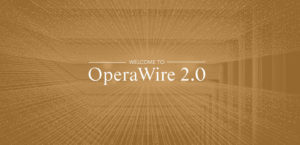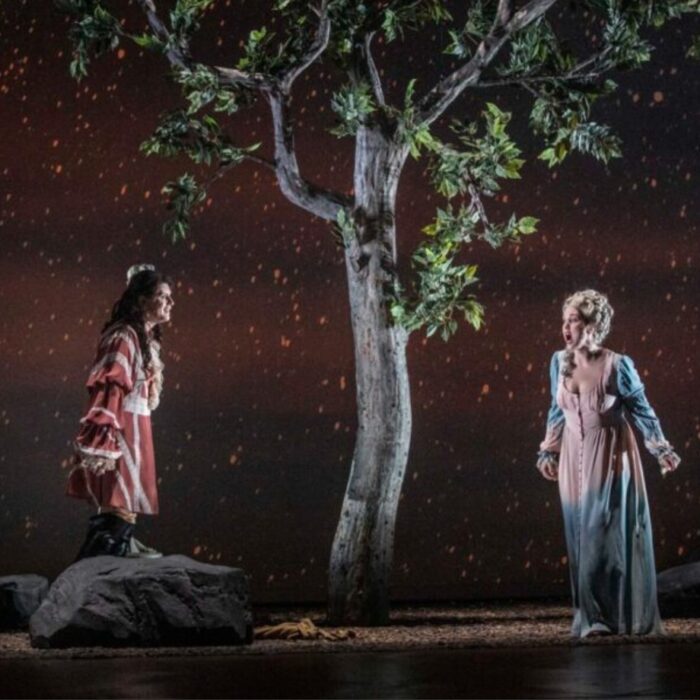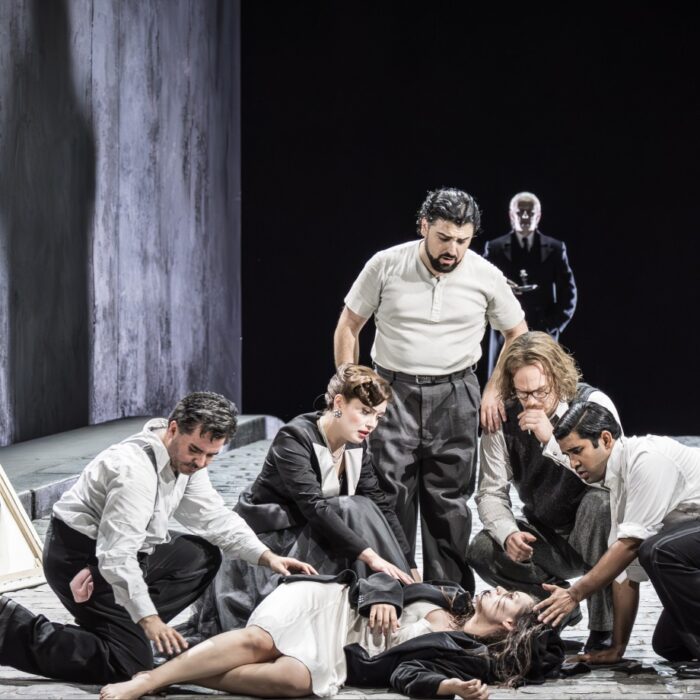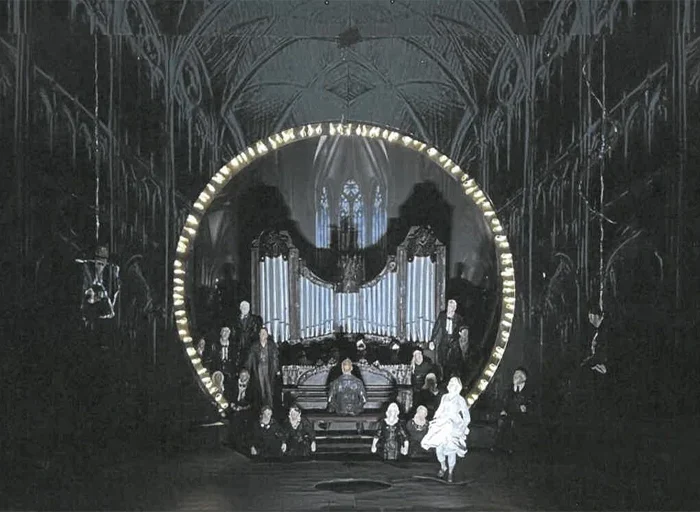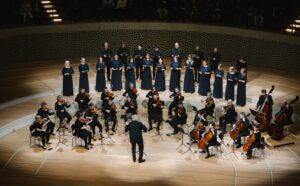
Elbphilharmonie Hamburg 2025 Review: Arvo Pärt 90
By Mengguang Huang(Photo: Daniel Dittus)
In recent seasons, Hamburg’s Elbphilharmonie has turned curation into an act of composition — a series of small-scale but focused festivals exploring how contemporary music still speaks to the soul. Few composers suit its luminous acoustics better than Arvo Pärt, whose world depends on clarity and silence. For his 90th birthday, his music returned here in its most natural form: sung by his compatriots, the Estonian Philharmonic Chamber Choir, under Tõnu Kaljuste, joined by Hamburg-based Ensemble Resonanz — an evening that felt like intimate meditation.
Musical Highlights
Under Tõnu Kaljuste’s precise yet sensitive direction, the “Stabat Mater” unfolded with crystalline clarity and structure: the ancient trochaic rhythm, long-short, stressed-unstressed, rendered audible in every phrase, the very foundation of Pärt’s “path of reduction.” The choir delivered lines with disciplined restraint, vowels extended until language itself seemed to dissolve into vibration, while the strings responded with tensile precision, their pale, almost transparent tone illuminating the work’s geometry. Pärt’s descending three-tone motif, the genetic cell of the piece, reappeared mirrored, inverted, stretched — a meditation on descent, from heaven to earth, from voice to silence. Short instrumental interludes and carefully measured pauses punctuated the flow, giving shape to the liturgical text without sentimentality. In the hall’s crystalline acoustics, the separation between human breath and instrumental resonance vanished.
As “Stabat Mater” concluded, the choir quietly withdrew, leaving the strings to flow seamlessly into “Festina lente,” an exercise in paradox: “make haste slowly.” Violins, violas, and basses moved in three overlapping tempi, creating ripples of resonance that seemed to bend time itself. Kaljuste allowed the lines to unfold organically, and the music became a breathing organism. One could sense the audience unconsciously adjusting their heartbeat to the pulse of the piece, the hall itself inhaling and exhaling with the sound. The overlapping strings shimmered like sunlight flickering across rippling water, while the faintly vibrating air seemed to trace invisible currents around the seats, caressing the listeners. Shadows shifted imperceptibly in the ceiling, as if the architecture itself were attuning to the delicate ebb and flow, and for a few moments, one could feel the music suspending the world outside.
Illuminating Voices
In “L’Abbé Agathon,” soprano Maria Listra brought a gentle radiance to the role of the saintly hermit’s interlocutor. Her voice, pure yet grounded, navigated passages of high difficulty — soft, murmured lines that demanded extreme control — with astonishing stability of breath and a clarity of projection that carried even the faintest whispers across the hall. These intimate, almost secretive gestures of sound never lost presence, and they conveyed the compassion at the core of Pärt’s late style: a serenity born from its full acknowledgment. The dialogue between soloist and ensemble unfolded as a serene drama, a parable told entirely through sound.
After the interval came Šerkšnytė’s “De profundis,” compared to the controlled kinetica of “Festina lente,” it felt strikingly more dynamic — a surge of spontaneous energy. Written when the composer was only twenty-two, the single-movement work carries an astonishing gravity. Though rooted in the traditions of her homeland, Šerkšnytė draws also on the meditative breadth of Indian ragas: motifs unfold slowly, circling rather than progressing, until tension gives way to radiance. Ensemble Resonanz shaped these crescendos with patient inevitability, allowing energy to gather and dissolve in waves— a Baltic cry turned into pure, luminous sound.
Feeling the Baltic Soul
“Adam’s Lament” brought the concert to its emotional summit — through a slow, inevitable unfolding of sorrow. Pärt’s conception of Adam as the embodiment of all humanity, grieving the loss of divine intimacy, found a haunting clarity in the choir’s divided voices: two choirs echoing one another like fragments of a single conscience. When the lament swelled, it seemed to bloom from within, dissonance resolving into fragile consonance, pain into acceptance. Ensemble Resonanz sustained the work’s austere architecture with a striking sensitivity — the strings hovering just beneath the choral texture, their resonance expanding each phrase like an afterimage of sound.The performance revealed the essence of Pärt’s art: compassion rendered in tone, silence as redemption.
In an age when so much so-called minimal or meditative music risks drifting into emptiness, Pärt’s work still safeguards the substance within simplicity — the spiritual core and the sensitiveness towards text that give sound its weight. And tonight, the audience was privileged to encounter interpreters who not only understood that essence, but breathed with it, turning reverence into living sound. In Hamburg, where the air still carries the salt of the Baltic Sea, that sound felt like a homecoming — a quiet bridge between northern waters and the inner silence from which Pärt’s music has always risen.
